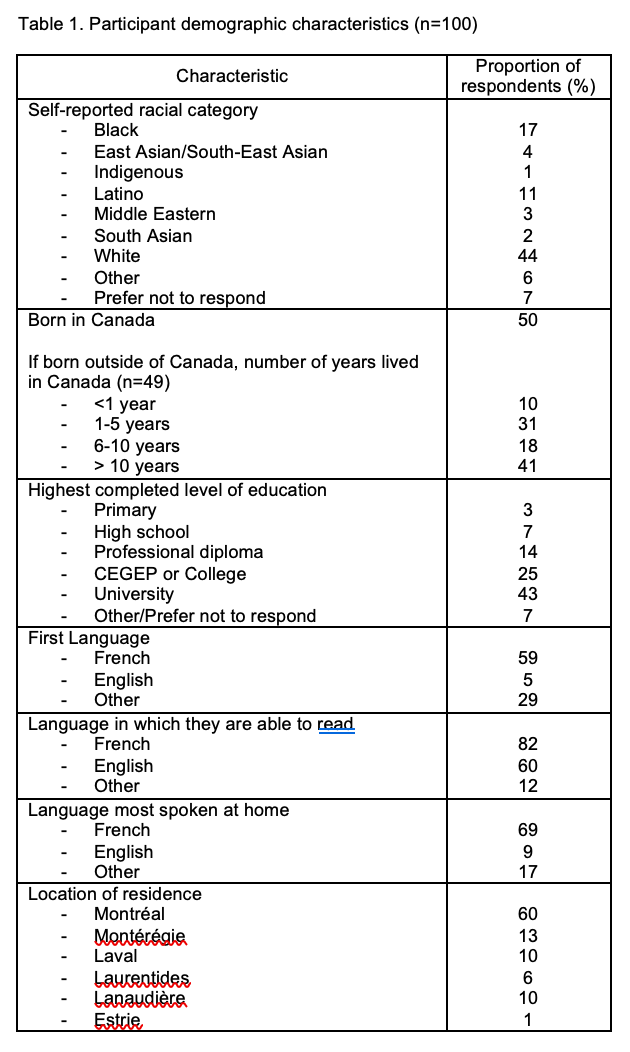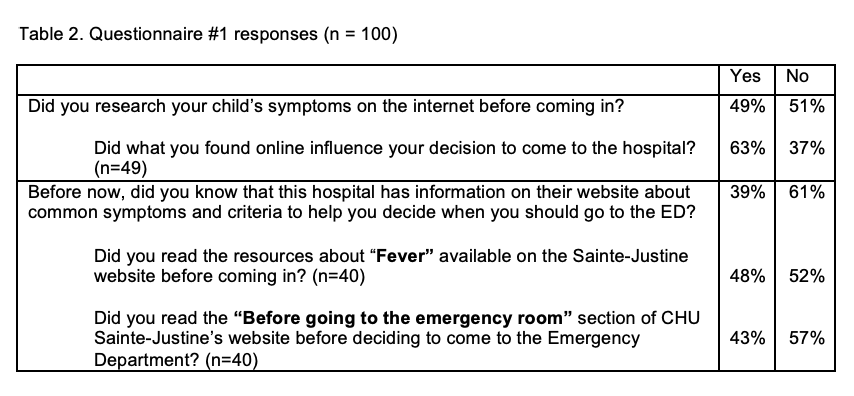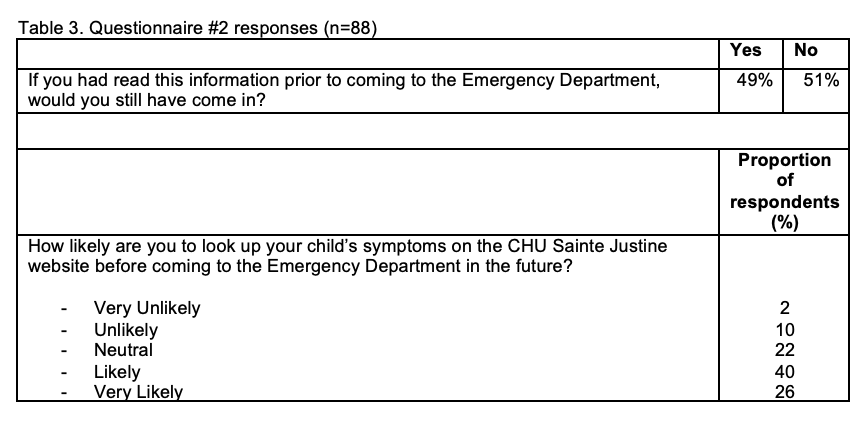Emergency Medicine
Session: Emergency Medicine 11: Potpourri
412 - Use of CHU Ste. Justine online resources prior to visiting the Emergency Department for less-urgent, acute febrile illness
Monday, May 6, 2024
9:30 AM - 11:30 AM ET
Poster Number: 412
Publication Number: 412.3300
Publication Number: 412.3300

Nathalie Gaucher, MD PhD FRCPC (she/her/hers)
Associate Professor
CHU Sainte-Justine
Montreal, Quebec, Canada
Presenting Author(s)
Background: Over the past 20 years, visits to pediatric emergency departments (EDs) across Canada have increased, with a higher proportion of presentations for lower acuity symptoms. Many pediatric institutions’ websites now provide recommendations for caregivers on common illnesses and reasons to seek care. Increasing use of internet resources may improve health literacy and decrease ED use for lower acuity presentations like uncomplicated viral illness.
Objective: The objective of this study was to assess whether caregivers presenting with children with lower acuity at triage were aware of and using the online resources provided by our pediatric institution to help with at-home management of febrile illnesses and to guide their decision to present to the ED.
Design/Methods: This was a cross-sectional study in a tertiary care pediatric ED using a convenience sample of caregivers of well children 6 mo - 17 years, presenting with a fever 72 hours or less and triaged as Canadian Triage and Acuity Scale levels 3 to 5. Participants completed two questionnaires. The first included demographic data and use of general online health information and our institutions’ website, and whether use of those resources influenced their decision to present to the ED. Questionnaire 2 asked for feedback on dedicated web materials from our institution.
Results: From April-July 2023, 100 caregivers participated in the study (response rates questionnaires 1 and 2: 80% & 70%, respectively). Half (49%) of caregivers researched their child’s symptoms prior to coming to the ED. About one third (39%) of respondents were aware that our institution provided online information for caregivers about common symptoms and when to present to the ED. Half (51%) of caregivers who completed questionnaire 2 said they would not have come to the ED if they had read these resources prior. Many (66%) respondents reported they would be “likely/very likely” to look up their child’s symptoms on the institutional website before going to the ED in the future.
Conclusion(s): Half of caregivers presenting to the pediatric ED for their child’s lower-acuity febrile illness conducted research on their child’s symptoms prior to visiting the ED and most of those who did were influenced in their decision to come to ED by what they found. However, two thirds of caregivers were not aware that our pediatric institution had online resources available. Those who were, did consult these resources. Public promotion of the institutional resources available to parents has the potential to empower parents manage common symptoms at home and prevent ED visits for lower-acuity illness.



